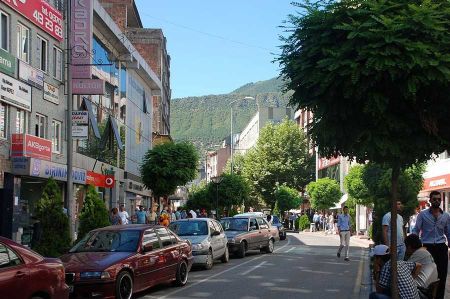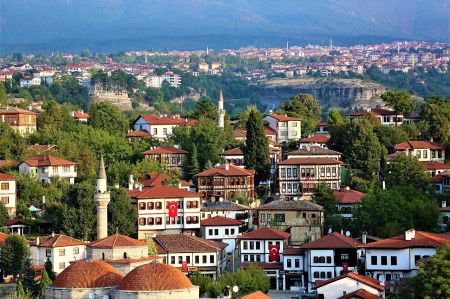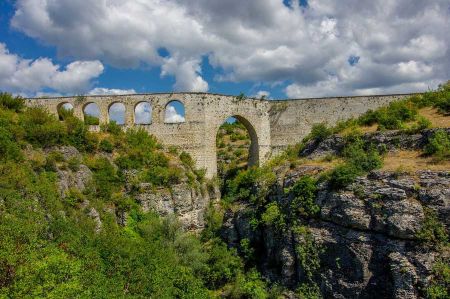Karabük - industrial city in the Black Sea region
- Written by Portal Editor
Shortly after the founding of the Republic of Turkey by Mustafa Kemal (Ataturk), there was a rapid development in industrial terms, which among other things led to the establishment of the first steel mill in Turkey.
In search of a suitable location, the investors chose the village of Öğlebeli at the confluence of the Soğanlı and Araç streams.
An industrial metropolis that was created on the drawing board.
The modern place Karabük arose precisely at this confluence of the creeks Soğanlı Çayı and Araç Çayı, which together form the Filyos river (Filyos Çayı in Turkish, also Yenice Irmağı), where there was “just” the village Öğlebeli before. Karabük is not a historically grown city in that sense. The place was originally a Mahall of the village of Öğlebeli, which around 1900 consisted of a small train station surrounded by just a few houses on the route between Zonguldak on the Black Sea and Ankara in the south. The city of Karabük was founded in 1939 after the first steel mill was founded in Turkey and then developed rapidly. The factory was built in 1937. Production began two years later. Simple accommodation was built for the factory workers in the Araç valley. These formed the starting point for the Dereevler and Yüzevler districts. The Yenişehir district was created for engineers and civil servants. Karabük expanded rapidly and by 1940 had 6,825 inhabitants already. By 1955 the number had doubled to 15,624.
In 1941, Karabük became a Bucak of Safranbolu. In 1953 Karabük was granted the status of the capital of a district in the Zonguldak Province. Karabük received the status of provincial capital in 1995.
The modern road to Ankara leads past the Kardemir steelworks, which is about a kilometre south of the modern business centre on the plain. The main road north of the Irmak – Karabük – Zonguldak railway line is lined with avenue trees. The two rivers converge south of the central train station. On the other sides, the city is bordered by partially wooded hills.
Investors determine the location
 In the opinion of the investors, all prerequisites for the operation of a steel mill were given and so the construction of the first factory halls and the first houses for the required workers began in 1937. The first accommodations of the future factory workers were mostly just very spartan huts that were built in the valley of the Araç. The present-day districts of Dereevler and Yüzevler developed from these first ironworks, and you can still see their original inhabitants; quite the opposite of the Yenişehir district, which was reserved for engineers and civil servants in the city. Steel production started just two years later.
In the opinion of the investors, all prerequisites for the operation of a steel mill were given and so the construction of the first factory halls and the first houses for the required workers began in 1937. The first accommodations of the future factory workers were mostly just very spartan huts that were built in the valley of the Araç. The present-day districts of Dereevler and Yüzevler developed from these first ironworks, and you can still see their original inhabitants; quite the opposite of the Yenişehir district, which was reserved for engineers and civil servants in the city. Steel production started just two years later.
The need for workers increased steadily and so Karabük did, which literally translated actually means "black thicket". According to a current census, the number of residents has risen to 108,710, an incredible number in such a short time.
Since 1995 Karabük has also been the provincial capital of the district of the same name in the province of Zonguldak. A total of 218,463 people live here on an area of 2,864 km2, who more or less earn their income from the steel industry or agriculture, which is not easy in the narrow valleys. The surrounding mountains Keltepe (2,000 meters), Holdulca Daği (1,700 meters), Tepe Dağ (1,043 meters), Kıraç Tepesi (1,400 meters), Sarıçiçek Tepesi (1,750 meters) and Keçikıran Tepesi (1,400 meters) invite you to hike and relax, to which the idyllic rivers contribute too.
A highlight of the region - Safranbolu
 However, the province of Karabük has become famous for the nearby museum village Safranbolu, which is now a UNESCO World Heritage Site and is visited by thousands of tourists every year. When you travel to Safranbolu, please don't forget to visit the Roman aqueduct bridge “Inceköprü”. Other sights in the Karabük region are the excavations of the mosaics and rock tombs as well as the unique rock tunnel in Hadrianopolis / Eskipazar. You are sure to easily find someone local to help you locate these attractions.
However, the province of Karabük has become famous for the nearby museum village Safranbolu, which is now a UNESCO World Heritage Site and is visited by thousands of tourists every year. When you travel to Safranbolu, please don't forget to visit the Roman aqueduct bridge “Inceköprü”. Other sights in the Karabük region are the excavations of the mosaics and rock tombs as well as the unique rock tunnel in Hadrianopolis / Eskipazar. You are sure to easily find someone local to help you locate these attractions.
Read more about Safranbolu here!
Poznan or Poznan - a tour of the city
